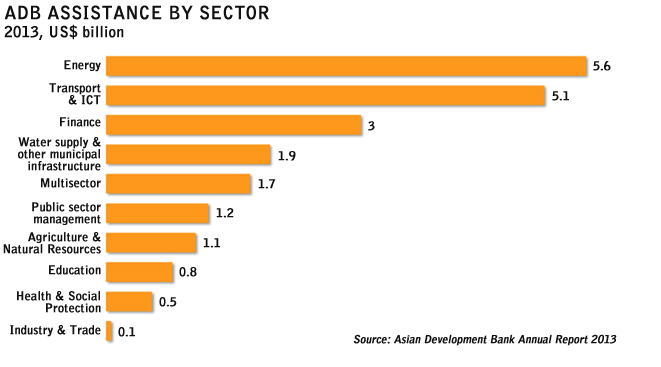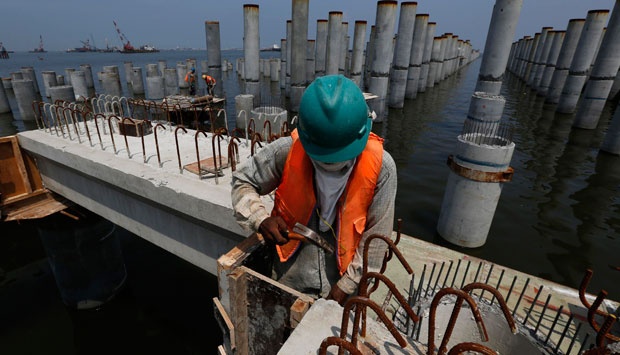During the recent ACCCRN Learning Forum held in the city of Semarang, Indonesia the challenges of generating, initiating, researching, building, growing, and communicating urban climate change resilience (UCCR) were brought into keen focus. The million dollar questions on everybody’s lips at the end of the forum was: so, where do we go from here? And, how do we get there?
One challenge that trickled through into many of discussions and presentations at the forum was exactly that, how to bring the (millions? billions? trillions?) of dollars needed for UCCR. For many of the international development and UCCR professionals the clarion call for funding is a familiar one, with resilience jostling with many other approaches and needs for their own budget lines.
The big ticket budget lines for development banks and other International Financing Institutions (IFIs) are dedicated to various types of infrastructure. The ADB, for example, spends over 60% of its funds on infrastructure, the majority of which are spent on Energy, Transport and ICTs (see below).

High spending on infrastructure from IFIs is not undertaken without good reason, as Asia’s large population and racing economy requires support from various infrastructure types for growth to be maintained. Indeed, most of this growth is being driven by the region’s cities with the 45-50% of the population that is urban in Asia and the Pacific generating over 80% of the region’s GDP. Because of this, by 2025 60% of all infrastructure financing will be spent in cities. In South Asia for example, this “infrastructure gap” is huge, and estimated by the World Bank at 2.5 trillion USD over the next ten years.
So what do these astronomical sums mean? Money is being spent on developing of economies that are looking towards urbanization and urban economies to drive national GDP figures. Cities attract funding and generate financing, but poverty rates are actually going up in cities.
UCCR’s community based credentials hold the answer for many. It acts as a salve of sorts to rapid economic growth, uncontrolled urbanization, and climate uncertainty all of which create a lethal cocktail of challenges, in particular in rapidly growing small and medium sized cities.
The ACCCRN forum as well as promoting deeper commitment and rooting of resilience approaches, invited more joined up thinking and action connecting infrastructure funding processes and actors with and UCCR projects.
Although most UCCR approaches have infrastructure links at their core, there is something of a mismatch of scales between ‘top down’ infrastructure investments and community based resilience building such as ACCCRN. To bridge this, UCCR, and its link with infrastructure could be dovetailed, in terms of project development, and conceptually, as urban projects, around which shared interests could be potentially brokered and enhanced.
In ACCCRN’s rapidly growing small and medium sized cities economic growth and the resilience of vulnerable populations are in fact co-dependent, as they determine the success of place. It is in these cities that resilience funding comes into its own, it is here that it complements infrastructure financing, as well as infrastructure heavy development paradigms.
Gladly, this is already happening thanks to the creation of the UCCRTF (Urban Climate Change Resilience Trust Fund) by the Rockefeller Foundation, ADB, USAID and DFID. This funding is for the development of new UCCR projects throughout Asia and is enabling the integration of UCCR into many new investments in infrastructure in the region.
During the forum, credence was given to going beyond extra funding and towards a more strategic way of thinking and acting on infrastructure financing and UCCR. In short, the more explicit connecting of the economic and social priorities of a city because they both depend on a city system’s adaptive capacity.
Some strategic approaches as well as concrete solutions for deeper rapprochement between infrastructure focused and UCCR include:
- There is a need for better and clearer communications concerning UCCR and resilience in general, but also regarding the benefits of UCCR to urban systems and economies. This means adapting approaches so that business groups also understand the importance of community adaptive capacity for overall urban resilience.
- UCCR approaches need to involve national governments as this will help the clustering of smaller loans into larger sums, adapting to the requirements of many IFIs.
- Funding partners also need to be invited into UCCR project discussions from the point of project inception. This will enable them to pinpoint co-benefits between infrastructure and UCCR investments.
- “Green Growth” paradigms, which also include climate change mitigation are potentially meaningful for bringing together UCCR and infrastructure development. These approaches focus on reducing carbon lock in for infrastructure spending which means making sure that funding that is used to plug the infrastructure gap is also used to fund shared urban space such as parks and public transport rather than roads which keep cities dependent on the use of the private car. These approaches connect well with the ecosystem based adaptation and encourage research into how new funding platforms for green growth and UCCR strategies might come about.
- Measurement of the ‘Resilience Dividend’ needs to be more widely researched and shared. The City Resilience Index developed by ARUP enables for a city to measure how resilient it is, and indicates policy and spending areas for improvement, but it does not project an economic rationale for further investment by cities and governments into resilience. This rationale must be communicated to strengthen place based approaches which focus on new types of partnerships.
- Habitat III and the SDGs could bring together UCCR professionals and actors from the infrastructure sector. This is crucial, especially for representatives of communities who are being affected by climate change, and for infrastructure providers who are generally more focused on their profit margins. Although these two groups have very different perspectives and priorities, a shared understanding linked to the importance of inclusive economic growth in cities must be sought out.








